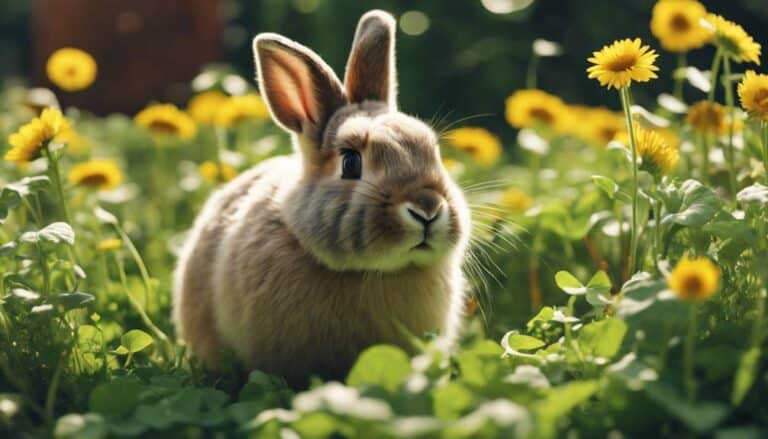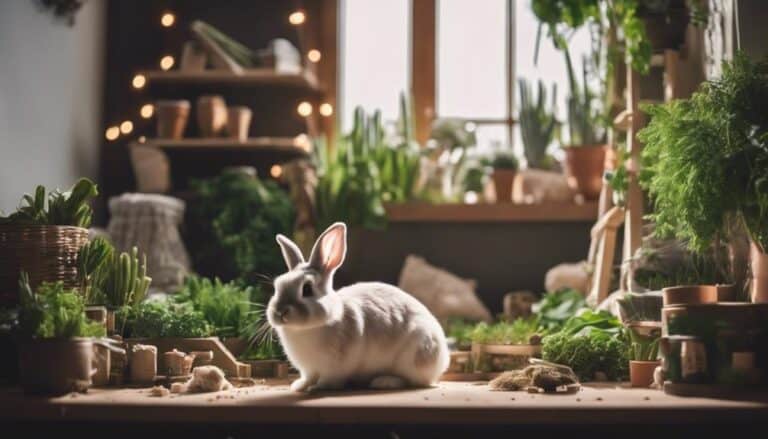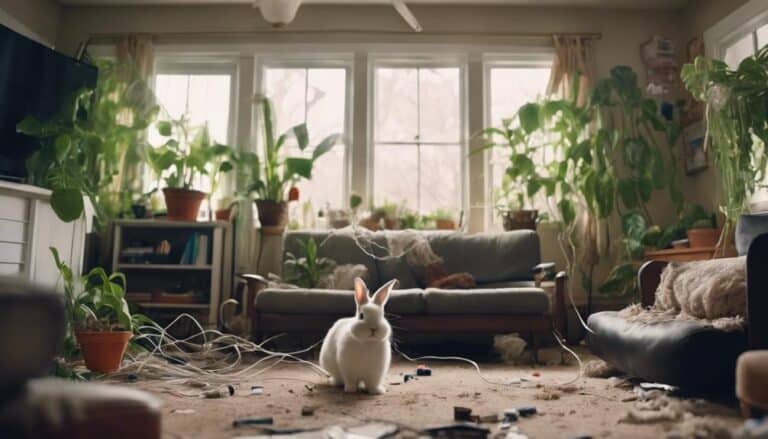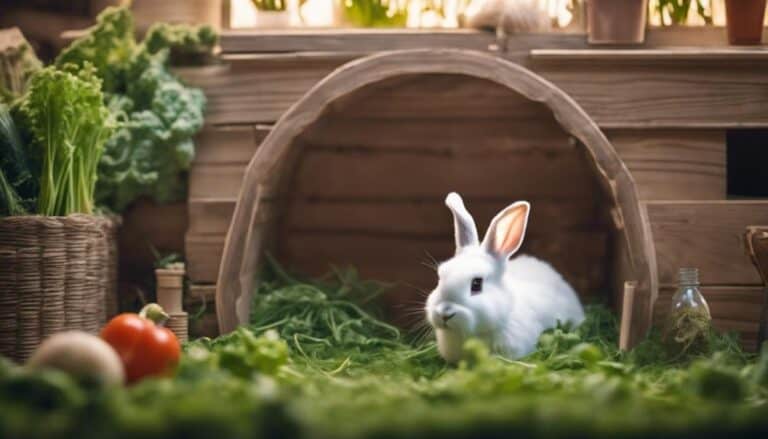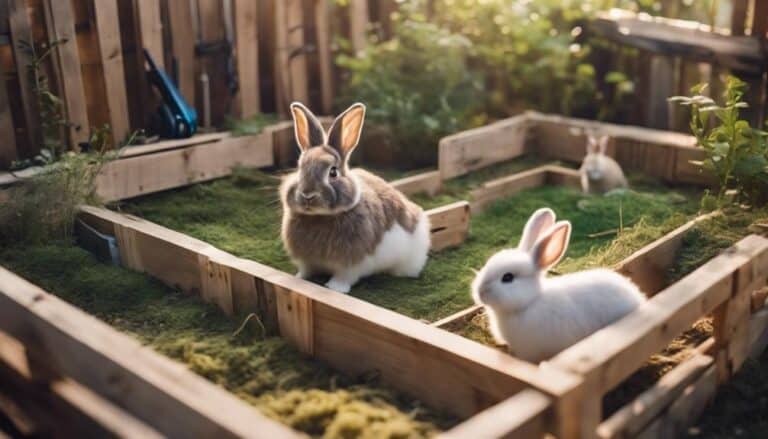Did you know that according to a survey by the House Rabbit Society, 60% of pet rabbits in the United States are kept indoors?
When considering whether indoor or outdoor habitats are best for bunnies, there are various factors to weigh.
Indoor environments offer protection from external threats and easier health monitoring, but outdoor settings can provide natural stimulation and fresh air.
As you ponder the ideal living space for your furry friends, consider the implications of both options before making a decision that aligns best with your bunnies' well-being.
Contents
- 1 Key Takeaways
- 2 Outdoor Dangers for Bunny Habitats
- 3 Pros and Cons of Indoor Habitats
- 4 Creating a Happy Indoor Bunny Environment
- 5 Benefits of Outdoor Bunny Habitats
- 6 Challenges of Outdoor Bunny Habitats
- 7 Ensuring a Safe Outdoor Bunny Habitat
- 8 Frequently Asked Questions
- 9 Which Habitat Option is Safer and Healthier for Bunnies? Indoor or Outdoor?
- 10 Conclusion
Key Takeaways
- Indoor habitats offer more safety from predators and environmental threats.
- Monitoring health is easier indoors, aiding early illness detection.
- Indoor environments provide increased social interaction and mental stimulation.
- Outdoor habitats allow for natural behaviors and sensory experiences but require careful maintenance.
Outdoor Dangers for Bunny Habitats
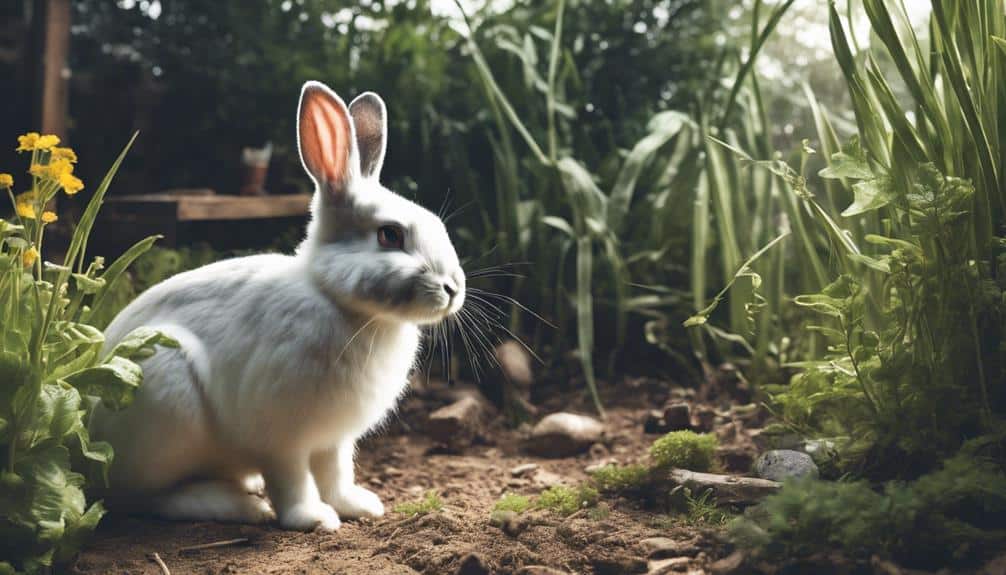
Outdoor bunny habitats are fraught with various dangers, including predators like feral cats, hawks, dogs, raccoons, and even people. These threats can put outdoor rabbits at risk of harm or even death.
Additionally, the risk of heat stroke is a significant concern for outdoor bunnies, especially in temperatures exceeding 80 degrees Fahrenheit. Exposure to poisonous plants in their environment presents another danger to their well-being.
The living conditions of outdoor rabbits also make them more susceptible to pests, parasites, and diseases such as fleas, ticks, mites, worms, and potentially even West Nile virus.
Ensuring the safety and health of outdoor rabbits requires careful attention to these risks. Regular monitoring for early signs of illness is vital due to the challenges posed by their living conditions. Providing a secure and protected outdoor environment, free from potential predators and harmful plants, is essential to minimizing the health risks faced by outdoor bunnies.
Pros and Cons of Indoor Habitats
Indoor habitats offer a secure environment for your bunnies, shielding them from potential dangers like predators and harsh weather conditions. However, challenges such as maintaining proper ventilation, preventing boredom, and ensuring enough space for exercise must be carefully considered.
Balancing the benefits of safety and health with the challenges of space and stimulation is essential for creating the best indoor habitat for your beloved rabbits.
Indoor Habitat Benefits
Enhancing the well-being of your pet rabbit, an indoor habitat provides numerous benefits that contribute to their overall health and happiness. Indoor habitats offer controlled climates, reducing the risk of temperature-related health issues. Indoor rabbits also have lower exposure to predators, minimizing the risk of attacks or injuries.
Monitoring indoor rabbits' health is easier, leading to early detection of illnesses and better care. Additionally, indoor environments provide more opportunities for social interaction and mental stimulation, promoting the well-being of rabbits.
The closeness of indoor habitats allows for enhanced bonding between rabbits and their human caregivers, ultimately improving the quality of life for the rabbits.
Indoor Habitat Challenges
While providing numerous benefits, indoor habitats also present certain challenges that pet rabbit owners should consider. Indoor rabbits are more prone to temperature-related health issues if the environment isn't adequately controlled. Despite lower exposure to predators, indoor rabbits still require safety measures to prevent accidents or stress-related issues.
Monitoring health issues in indoor rabbits is easier due to the controlled environment, but owners must still guarantee proper veterinary care is accessible. Enrichment and mental stimulation are essential for indoor rabbits to prevent boredom and promote overall health. Creating a safe and stimulating indoor habitat requires attention to detail and a commitment to providing a balanced environment for the well-being of your pet rabbit.
Creating a Happy Indoor Bunny Environment
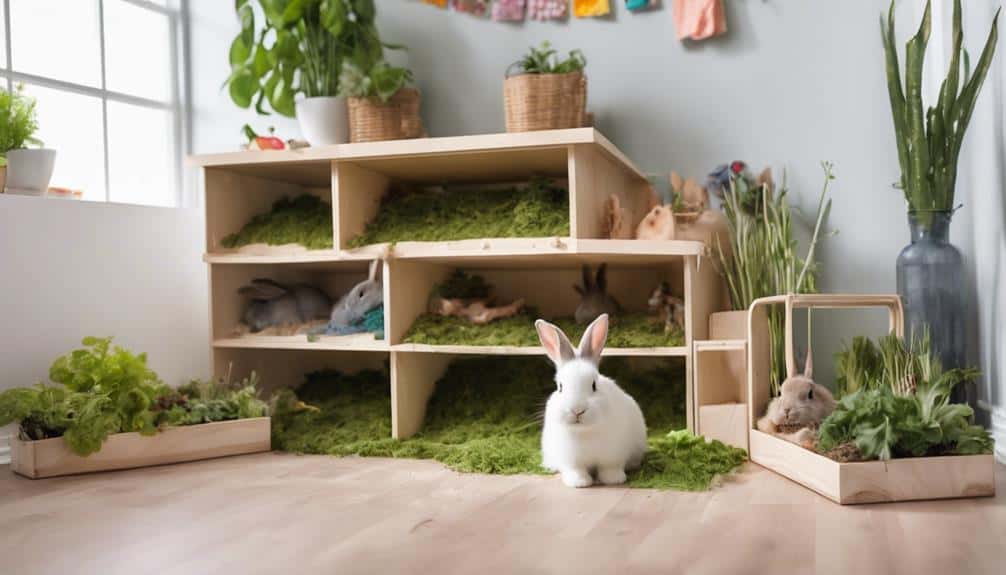
To create a happy indoor environment for your bunny, you need to make sure you have the essential items like a cozy hideaway, water, and hay.
Bunny-proofing your home is important to prevent accidents and keep your bunny safe.
Engaging in enrichment activities, such as providing toys and tunnels, will help stimulate your bunny's natural behaviors and prevent boredom.
Indoor Bunny Essentials
Creating a happy indoor bunny environment involves providing a spacious, safe, and comfortable living space where your bunny can thrive. To guarantee your indoor bunny's well-being, consider the following essentials:
- Enrichment Activities: Include toys, tunnels, and hiding spots for mental stimulation.
- Maintain a Suitable Temperature: Sustain a suitable temperature range to prevent health issues related to extreme weather.
- Regular Interaction: Engage in playtime and grooming sessions to support your bunny's social and emotional needs.
Bunny-proofing Your Home
After ensuring your indoor bunny has a comfortable living space with enrichment activities, a suitable temperature, and regular interaction, the next step is to bunny-proof your home to create a safe and happy environment.
Bunny-proofing involves removing potential hazards like electrical cords and toxic plants, as well as small objects that rabbits could ingest. Provide a designated safe space with ample room for exercise, including chew toys, tunnels, and hiding spots to enrich the indoor environment.
Supervising interactions with other pets and family members is vital for a positive experience. Establish a consistent feeding schedule and maintain a clean living space to promote the health and well-being of your indoor bunny.
Enrichment Activities for Bunnies
Engage your indoor bunny with a variety of interactive toys and puzzles to promote mental stimulation and overall well-being. Providing obstacle courses, tunnels, and rotating toys can encourage physical exercise and play, preventing boredom and promoting curiosity.
Additionally, offering hiding spots and safe spaces within their indoor environment can help your bunny feel secure and reduce stress. Implementing positive reinforcement training, such as clicker training, can enhance the bond between you and your bunny.
Benefits of Outdoor Bunny Habitats
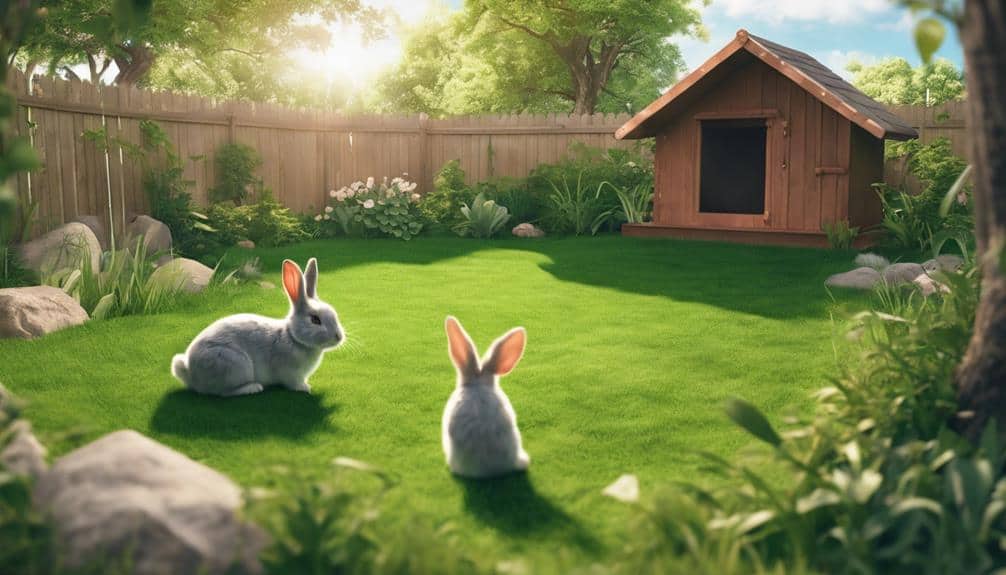
When considering the well-being of your pet bunny, choosing an outdoor habitat offers numerous advantages that contribute to their overall health and happiness. Rabbits living outdoors have access to an outdoor living area that provides enough space for them to exhibit natural behaviors, such as hopping, digging, and exploring.
The fresh air and sunlight in outdoor environments not only promote physical health but also stimulate mental well-being. Outdoor habitats offer a variety of textures and terrain for rabbits to explore, enhancing their sensory experiences and providing outdoor enrichment. Additionally, the presence of fresh grass and plants in outdoor habitats can offer rabbits additional nutrition and mental stimulation.
Challenges of Outdoor Bunny Habitats
Outdoor bunny habitats present several challenges that owners need to be aware of to guarantee the well-being of their pet rabbits. When choosing to house your bunnies outdoors, you must consider the following challenges:
- Predators: Outdoor bunny habitats expose rabbits to predators like feral cats, hawks, and dogs, putting them at risk of harm.
- Heat Stroke: Extreme temperatures above 80 degrees can lead to heat stroke in outdoor rabbits, posing a significant health threat.
- Poisonous Plants: Outdoor bunnies face the danger of ingesting poisonous plants in their environment, which can be toxic and potentially fatal.
It is essential to be vigilant and proactive in addressing these challenges to confirm the safety and health of your outdoor rabbits. Regularly inspecting the habitat for potential risks, providing shade, and offering a safe enclosure are essential steps in mitigating these challenges and creating a secure outdoor environment for your beloved pets.
Ensuring a Safe Outdoor Bunny Habitat
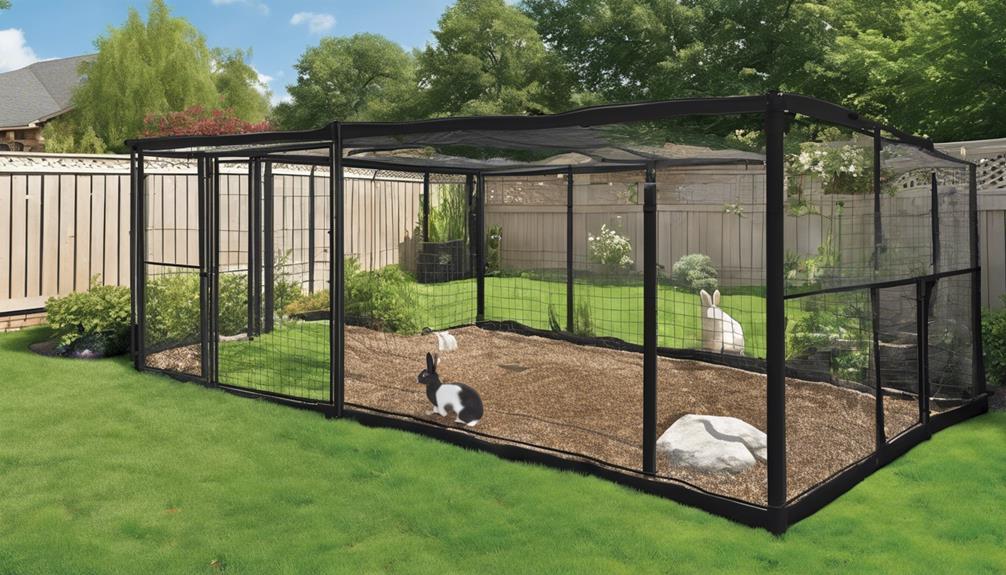
To guarantee the safety and well-being of your outdoor bunnies, it's essential to take proactive measures in creating a secure habitat that protects them from potential dangers. Rabbits living in outdoor habitats should be housed in enclosures that are securely enclosed to prevent predators like foxes, hawks, and cats from causing harm.
Providing ample shade and shelter is important to help rabbits stay cool and avoid heat stroke during hot weather. Regularly inspecting the outdoor habitat for toxic plants and promptly removing them can prevent accidental ingestion by the rabbits.
Implementing preventive measures such as using flea and tick control products can safeguard outdoor rabbits from parasites that may affect their health. Monitoring outdoor rabbits closely for signs of illness or distress is crucial, as early detection can be challenging in open spaces.
Frequently Asked Questions
Is It Better to Keep a Rabbit Inside or Outside?
Keeping a rabbit inside or outside? Indoor living offers comfort, safety, and health benefits with closer bonding and mental stimulation. Outdoor environments bring risks of predators, diseases, and extreme weather, impacting the rabbit's well-being.
What Is the Best Habitat for a Rabbit?
For the best habitat for a rabbit, consider indoor comfort, outdoor exploration, space requirements, environmental enrichment, temperature control, safety concerns, social interaction, natural instincts, health benefits, and behavioral differences. Tailor the habitat to meet your rabbit's individual needs and preferences.
What Habitats Do Rabbits Prefer?
Indoor comfort offers rabbits safety, controlled temperatures, and increased social interaction. Outdoor habitats provide enrichment but pose risks like predators and extreme weather. Consider your rabbit's needs for the best choice. Both options have benefits and drawbacks.
Do Rabbits Prefer to Live Outside?
You might think rabbits prefer outside, but indoor living provides safety, comfort, and enrichment. Natural instincts thrive indoors with social interaction, exercise, and bonding opportunities. Protect them from predators and extreme weather while ensuring their happiness.
Which Habitat Option is Safer and Healthier for Bunnies? Indoor or Outdoor?
When considering bunnies indoors vs outdoors, it is important to weigh the pros and cons of each habitat option. While outdoor spaces provide more space to roam and natural sunlight, indoor environments offer better protection from predators and the elements. Ultimately, the safest and healthiest choice will depend on individual circumstances and proper care.
Conclusion
As you weigh the options for your bunny's habitat, consider the benefits and risks of indoor and outdoor living.
While indoor habitats offer safety and health advantages, outdoor environments can provide natural stimulation and enrichment.
Stay tuned for our upcoming article where we explore further into the best practices for creating the perfect bunny habitat, ensuring a happy and thriving life for your beloved pet.

